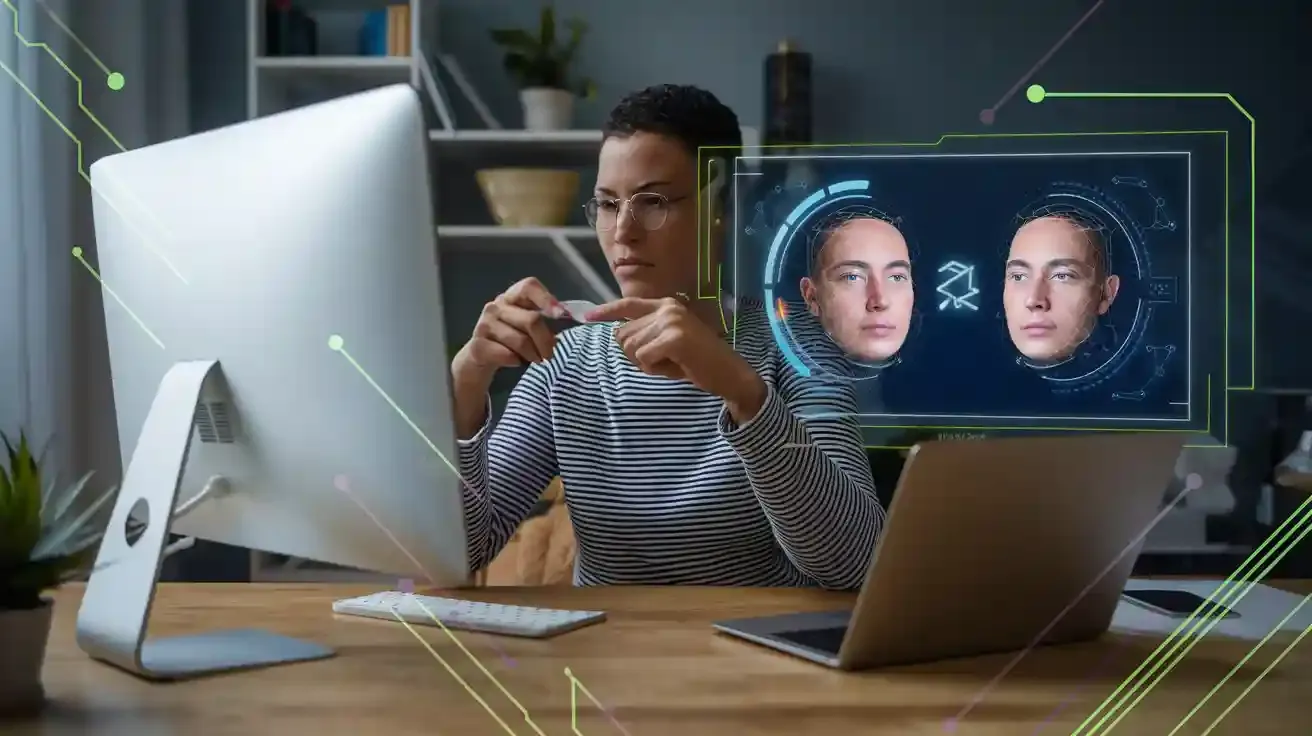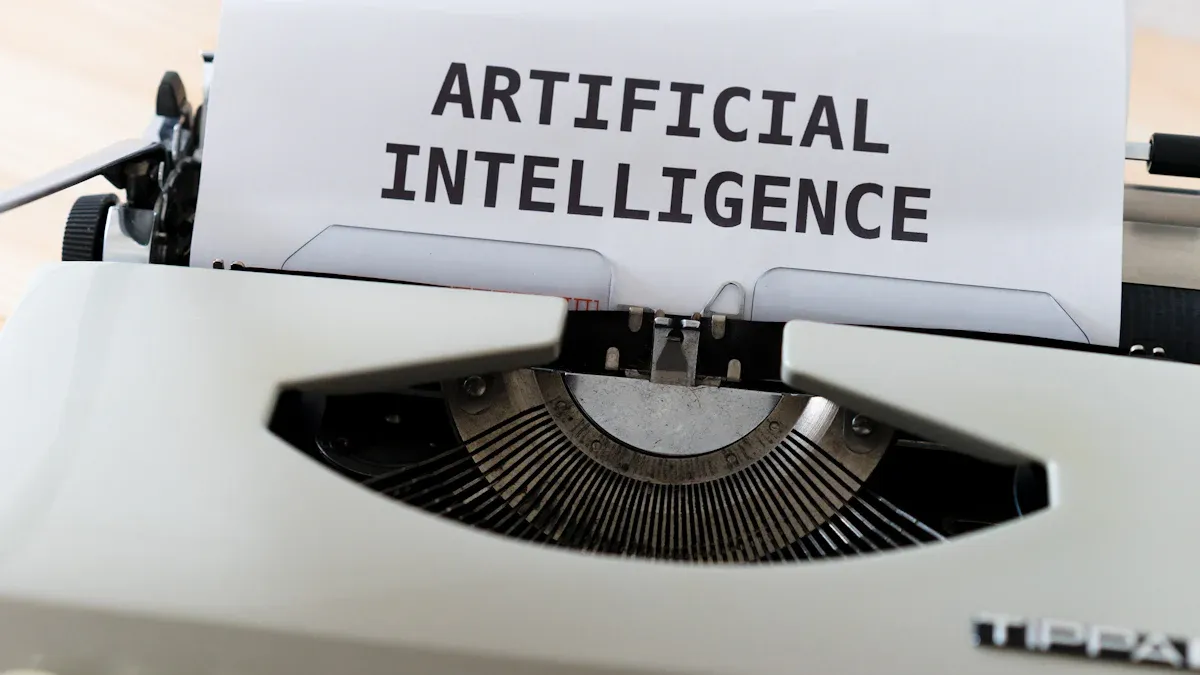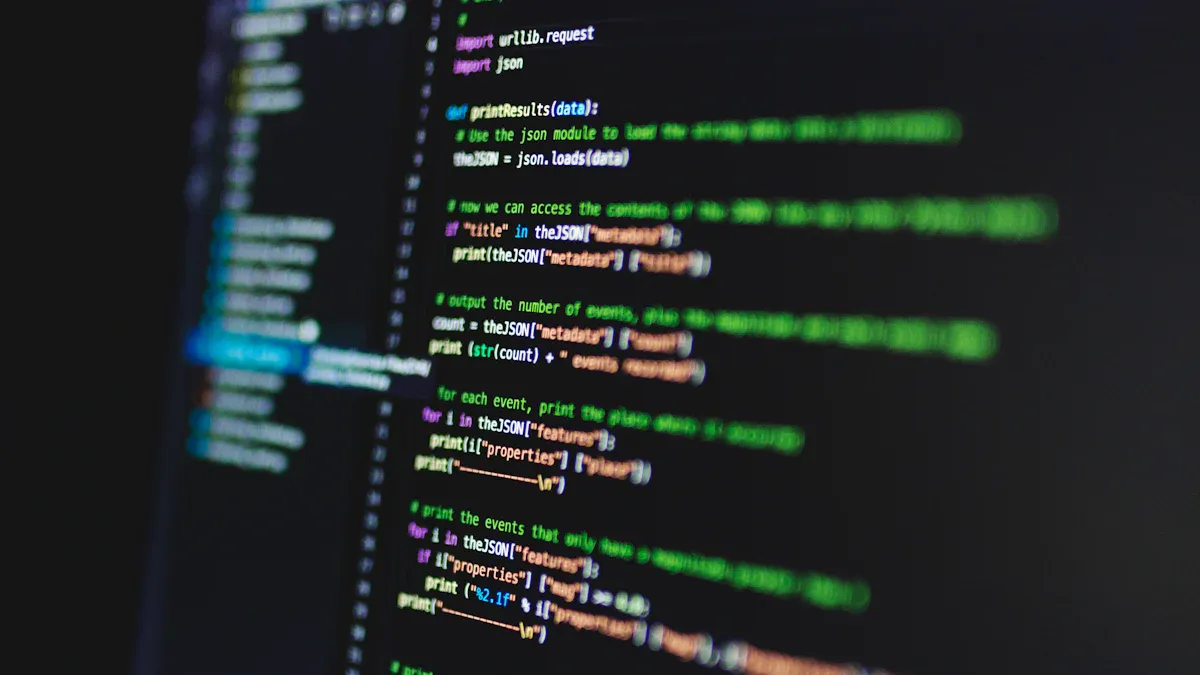AI Face Swap Video Made Simple for Beginners
Learn how to create realistic AI face swap videos with beginner-friendly tools. Follow simple steps to swap faces seamlessly and achieve professional results.

- Alexander Reed
- 13 min read

AI face swap video tools are transforming the way videos are created. They allow you to switch one face with another in a video, opening up a world of fun and creative possibilities. Why is this technology so popular? Let’s take a look at the facts. In 2023, apps like Reface and Snapchat’s Face Swap were downloaded 150 million times. Social media users are embracing it—67% engaged with face swap content this year.
What’s the best part? AI makes it incredibly easy. You don’t need to be an expert or invest in expensive software. With the right AI face swap video tool, you can make swaps in just minutes. These tools utilize advanced technology to detect faces, match features, and blend them seamlessly. This results in videos that look professional. Whether for entertainment or projects, AI face swap video technology is simple to learn and enjoyable to experiment with.
Key Takeaways
AI face swap tools help you make cool videos fast and easy.
Pick clear videos and pictures for better results; details matter for realistic swaps.
Use simple tools like Akool AI or FaceSwap to make face swapping easier for beginners.
Change settings like blending and lighting to make swaps look real.
Always use AI face swapping carefully; ask before using someone’s face and don’t make fake content.
Understanding AI Face Swap

How AI Detects and Recognizes Faces
AI face swapping begins by finding faces in images or videos. But how does it do this? AI uses smart programs to spot features like eyes, nose, and mouth. It creates a special “map” of the face using many tiny points. This process, called facial recognition, is very accurate. For example, top tools can recognize faces correctly over 99% of the time, even for different people.
AI doesn’t just find faces—it studies them too. It looks at expressions, angles, and lighting to make sure the swap looks smooth. This is why AI tools work better than older methods. They do the hard work for you, saving time and giving great results.
The Process of Face Swapping in Videos
After finding a face, AI starts swapping it. Here’s how it works step by step:
Face Detection: AI looks through the video to find faces.
Feature Mapping: It matches the features of both faces.
Face Alignment: AI adjusts the new face to fit the old one’s size, angle, and expressions.
Blending: Finally, AI mixes the new face into the video so it looks real.
This process is super quick. Making a deepfake video can take just 27 seconds! But the final video’s quality depends on the tool and your images. Using good-quality pictures and videos is key to making swaps look real.
Why AI Face Swap Technology Is So Effective
AI face swapping is special because it’s precise and flexible. Unlike older methods that need manual work, AI does everything automatically. It uses deep learning to copy facial features, making swaps look very real. For example, in 2024, AI can use over 1,000 points to copy faces, including their expressions and angles.
Studies show AI tools work well with different types of data. For instance, the FaceForensics++ dataset, with 1,000 edited videos, shows how AI handles many swapping styles. But AI isn’t perfect. Fast face movements or tricky angles can cause mistakes. Even with these issues, AI face swapping is still amazing for deepfake videos and creative projects.
Tip: Use clear and high-quality videos and pictures for the best results. Better input means more realistic face swaps!
Step-by-Step Guide to AI Face Swapping

Image Source: pexels
Choosing the Right AI Face Swap Tool
To make great face swaps, pick the right tool. Some tools are easier for beginners and give better results. Tools like FaceSwap AI and Akool AI are simple to use. They have helpful features and guide you step by step. Even if you’re new, these tools make face swapping easy.
When picking a tool, check for these features:
User Interface: A clear design makes it easier to use.
Face Detection Accuracy: The tool should find and match faces well.
Processing Speed: Faster tools save time for longer videos.
Customization Options: Adjust settings for better control of the swap.
Pro Tip: Try free tools first to practice. Paid tools offer advanced features and higher quality.
Preparing Your Video and Face Images
Good preparation helps AI face swapping work better. Start with a clear video and a sharp image of the face to swap. Follow these tips for the best results:
Choose High-Quality Files: Use bright and clear videos and images. Blurry files can ruin the swap.
Match Angles and Expressions: The face in your image should look similar to the one in the video. This helps the AI work better.
Avoid Obstructions: Make sure the face is fully visible. Hats or shadows can confuse the AI.
Keep It Simple: Straight-on angles and neutral poses are easiest for beginners.
AI uses smart programs, like Generative Adversarial Networks (GANs), to mix facial features. It adjusts the swapped face to match movements, lighting, and angles. Better input files make face swaps look more real.
Uploading and Processing the Video
After preparing your files, upload them to the AI tool. Most tools follow similar steps, making it easy to start:
Upload Your Video: Log in and add the video you want to edit.
Add the New Face: Upload the face image you want to use. Some tools let you swap multiple faces.
Face Detection and Alignment: The AI finds faces and matches the new face to the old one.
Adjust Settings: Change options like blending or clarity for better swaps.
Generate the Video: Click the button to create your face swap. The AI processes the video and finishes the swap.
Note: Longer videos may take more time to process. Be patient while the tool works.
Fakeface shows how easy this process is. It explains each step, from uploading to downloading your video. In just a few clicks, you’ll have a face swap ready to share!
Adjusting Settings for Realistic Results
Once your AI face swap video is processed, it’s time to fine-tune the settings to make it look as realistic as possible. This step is where you can take your project from “good” to “amazing.” Don’t worry—it’s easier than it sounds! Most AI tools offer simple sliders or options to help you adjust the final look.
Here are some key settings you should focus on:
Blending Strength: This controls how smoothly the new face merges with the original video. If the blending is too weak, the swap might look unnatural. Increase the blending strength until the edges of the face disappear into the background seamlessly.
Lighting and Color Matching: AI tools often include options to match the lighting and colors of the swapped face with the rest of the video. Use this feature to avoid mismatched tones that can make the swap stand out.
Facial Expression Syncing: Some tools allow you to tweak how well the new face mimics the expressions in the original video. Adjust this setting to ensure the emotions and movements look natural.
Sharpness and Clarity: If the swapped face looks blurry, increase the sharpness. This will help bring out details and make the face look more lifelike.
Pro Tip: Always preview your changes before finalizing. Small tweaks can make a big difference in how realistic your deepfake face swap looks.
Experiment with these settings until you’re happy with the results. Remember, the goal is to make the swap look like it was part of the original video all along.
Exporting Your AI Face Swap Video
After perfecting the settings, it’s time to export your AI face swap video. This step is crucial because the export quality determines how good your final video will look. To get the best results, follow these tips:
Use High-Quality Source Material: Start with the best-quality videos and images you can find. The more detail your source material has, the better the AI can map facial features and textures.
Choose the Right Resolution: Always export in HD or 4K if your tool allows it. Higher resolutions make the video look sharper and more professional. Avoid exporting in low resolution, as it can make the swap look blurry.
Avoid Compression: Some tools let you choose the compression level during export. Pick minimal compression to preserve details in the swapped face. Over-compressed videos can lose important facial features.
Check for Artifacts: Before finalizing, watch the exported video for any glitches or artifacts. If you notice issues, go back and adjust the settings before exporting again.
Note: Clear, sharp faces with good lighting make a huge difference. Blurry or grainy footage can confuse even the best AI models, so always aim for the highest quality possible.
Once you’ve exported your video, share it with friends or upload it to social media. AI face swap tools make it easy to create fun and engaging content that looks professional. With a little practice, you’ll be swapping faces like a pro in no time!
Choosing the Best AI Face Swap Tool
Easy Tools for Beginners
If you’re new to face swapping, pick simple tools. These tools are made for beginners and are easy to use. They guide you step by step and don’t need technical skills. For example, Fakeface is a great option. It’s simple and helps you make professional videos quickly. No experience is needed to start.
Other beginner-friendly tools include GoEnhance AI and AI Ease Face Swap. These tools are fast and easy to use. Users like how quickly they can edit photos or videos. You don’t need advanced skills to try them. If you want something fun and simple, these tools are great choices.
Tip: Practice with free tools first. Once you’re ready, try paid tools for more features.
Important Features in AI Face Swap Tools
Not all face swap tools are the same. To get good results, look for key features. Here’s a quick list of what matters most:
| Feature | Why It’s Important |
|---|---|
| Clarity | Clear swaps need high-resolution images. |
| Angle Matching | Matching angles makes swaps look better. |
| Lighting Consistency | Same lighting keeps the swap natural. |
| Expression Matching | Similar expressions avoid weird or awkward results. |
Choose tools with these features for better videos. Tools like Swapfaces are great for both beginners and experts.
Free vs. Paid Face Swap Tools
Should you use free tools or pay for one? It depends on your needs. Free tools are good for learning and trying things out. For example, FaceSwap and DeepFaceLab are free and open-source. But they may take more time to get high-quality results.
Paid tools often have better features and work faster. For instance, AI Face Swap offers real-time swaps and strong privacy settings. Fakeface works with both videos and images but adds watermarks in its free version. Here’s a comparison:
| Tool | Pros | Cons |
|---|---|---|
| AI Face Swap | Real-time swaps, privacy-focused | Only for Windows, costs money |
| Fakeface | Works with videos and images, many models | Free version has watermarks, limits use |
| FaceSwap | Free, open-source | Needs training data, takes more time |
| DeepFaceLab | Advanced, free | Requires lots of training data |
Free tools are best for fun or practice. Paid tools are better for professional results. Think about your goals before deciding.
Tips for Better Face Swaps in Videos
Using High-Quality Videos and Images
To make your AI face swap look great, start with clear videos and images. Good input files help the AI create realistic swaps. Blurry or low-quality files confuse the AI and lead to bad results.
Why does quality matter?
A study found that top-quality deepfakes look almost real. This shows how sharp visuals make swaps convincing.
Research says people trust video deepfakes more than audio ones. Clear visuals are key for realistic swaps.
Perfect lip-syncing makes deepfakes look even better. HD videos help the AI match features correctly.
Tip: Use HD or 4K videos and sharp images. Better input gives better results.
Aligning Facial Features for Realism
Matching faces is important for good swaps. AI works best when the face in your image matches the angles and expressions in your video. If faces don’t align, the swap looks fake.
Here’s why alignment matters:
| Error Metric | What It Measures |
|---|---|
| Mean Square Error (MSE) | Checks how far predictions are from actual values. |
| Root Mean Square Error | Finds the average error size. |
| Mean Absolute Error | Measures the average difference between predictions and actual values. |
| Mean Absolute Percentage Error | Shows error size as a percentage. |
Most tools aim for errors below 7-9%. This keeps swaps looking natural.
Pro Tip: Use images with similar angles and expressions as your video. This helps the AI make swaps look real.
Experimenting with Tool Settings
AI face swap tools have settings to improve your results. Try different options to make your swaps look polished and professional.
Here are some methods and their benefits:
| Method | What It Does | Why It’s Useful |
|---|---|---|
| Text-to-Image Method | Uses AI models for sharp and detailed swaps. | Creates high-quality facial features and blending. |
| Image-to-Image Method | Lets you pick source images and expressions. | Quality depends on how well images match. |
| Photo Method | Replaces faces directly using photos. | Needs good photos to align faces properly. |
Adjust settings like blending strength, lighting, and expressions. Small changes can make your video look amazing.
Note: Preview your edits often. Tiny tweaks can improve the final video a lot.
Ethical Considerations in AI Face Swapping
AI face swapping is fun, but it needs careful use. When using an AI face swapper, think about how it affects others. Misusing this tool can cause problems, so let’s learn to use it responsibly.
First, always ask permission before using someone’s face. Think about how you’d feel if someone used your face without asking. It’s not just polite—it respects their privacy. Using someone’s image without consent can hurt their feelings or reputation.
Second, don’t make harmful or fake content. AI face swapper tools are strong, but they shouldn’t be used to spread lies or trick people. For example, creating a fake video of someone saying something they didn’t can break trust and even cause legal issues.
Also, think about how your videos might affect others. Even if you’re just testing, ask yourself if your video could upset someone. If you’re unsure, it’s better to stop and rethink your idea.
Finally, remember that face swap technology is a tool, not a toy. It’s fun to see what an AI face swapper can do, but you must use it wisely. By being kind and thoughtful, you can enjoy this tool without causing harm.
Tip: Ask yourself, “Would I like it if someone did this to me?” If not, don’t do it.
AI face swapping opens up a world of creativity. With the right tools and steps, you can create impressive videos in no time. It’s easy to learn and fun to experiment with, even if you’re just starting out. Don’t be afraid to try different settings or tools to see what works best for you.
Remember, face swap technology is powerful, so always use it responsibly. Think about how your videos might affect others. By staying ethical, you can enjoy this amazing AI technology while respecting everyone’s privacy and trust.
FAQ
What is a deepfake, and how does it work?
A deepfake uses AI to swap one face with another in videos. It studies facial features and expressions, then mixes them into the video. This makes the results look real and smooth.
Can beginners use deepfake tools easily?
Yes, most deepfake tools are simple for beginners. They provide step-by-step instructions, so anyone can create realistic videos. No special skills are needed to start.
How can I make my deepfake look realistic?
Use clear videos and sharp images. Match facial features and tweak settings like blending and lighting. These steps help the AI create smooth and natural results.
Are deepfakes safe to use?
Deepfakes are safe if used carefully. Don’t make harmful or fake content. Always ask permission before using someone’s face. Being responsible builds trust and respect.
What’s the best way to choose a deepfake tool?
Choose a tool with good face detection, quick processing, and adjustable settings. Free tools are great for learning, while paid ones offer better features for advanced videos.
- Tags:
- AI Face Swap Video